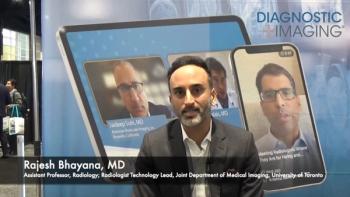
CT CAD review automatically measures lung nodule volume
A CAD-driven review process developed by R2 Technology not only flags lung nodules for radiologists to review on CT scans, but it improves viewing efficiency by automatically providing volume measurements for current and previous nodules. Workstations running the new process are being demonstrated by R2, Sectra, and Kodak at the RSNA annual meeting.
A CAD-driven review process developed by R2 Technology not only flags lung nodules for radiologists to review on CT scans, but it improves viewing efficiency by automatically providing volume measurements for current and previous nodules. Workstations running the new process are being demonstrated by R2, Sectra, and Kodak at the RSNA annual meeting.
Replacing linear assessments with more accurate volume-based assessments leads to substantial time savings, according to Dr. Kevin Kreeger, vice president of advanced development for R2 Technology.
"Within one-tenth of a second, doctors have done what used to take them 30 seconds," Kreeger said. "If there are 30 nodules to review for a single patient, you've just saved the doctor 30 times 30 seconds."
The review process, which has been incorporated into R2's stand-alone workstation and workstations from Sectra and Kodak, spares the radiologist having to manually select and segment nodules for measurement and produces consistent reproducible measurements. The process automatically loads and coregisters images of the same nodule taken at different periods of time and calculates the change in size.
Newsletter
Stay at the forefront of radiology with the Diagnostic Imaging newsletter, delivering the latest news, clinical insights, and imaging advancements for today’s radiologists.




























